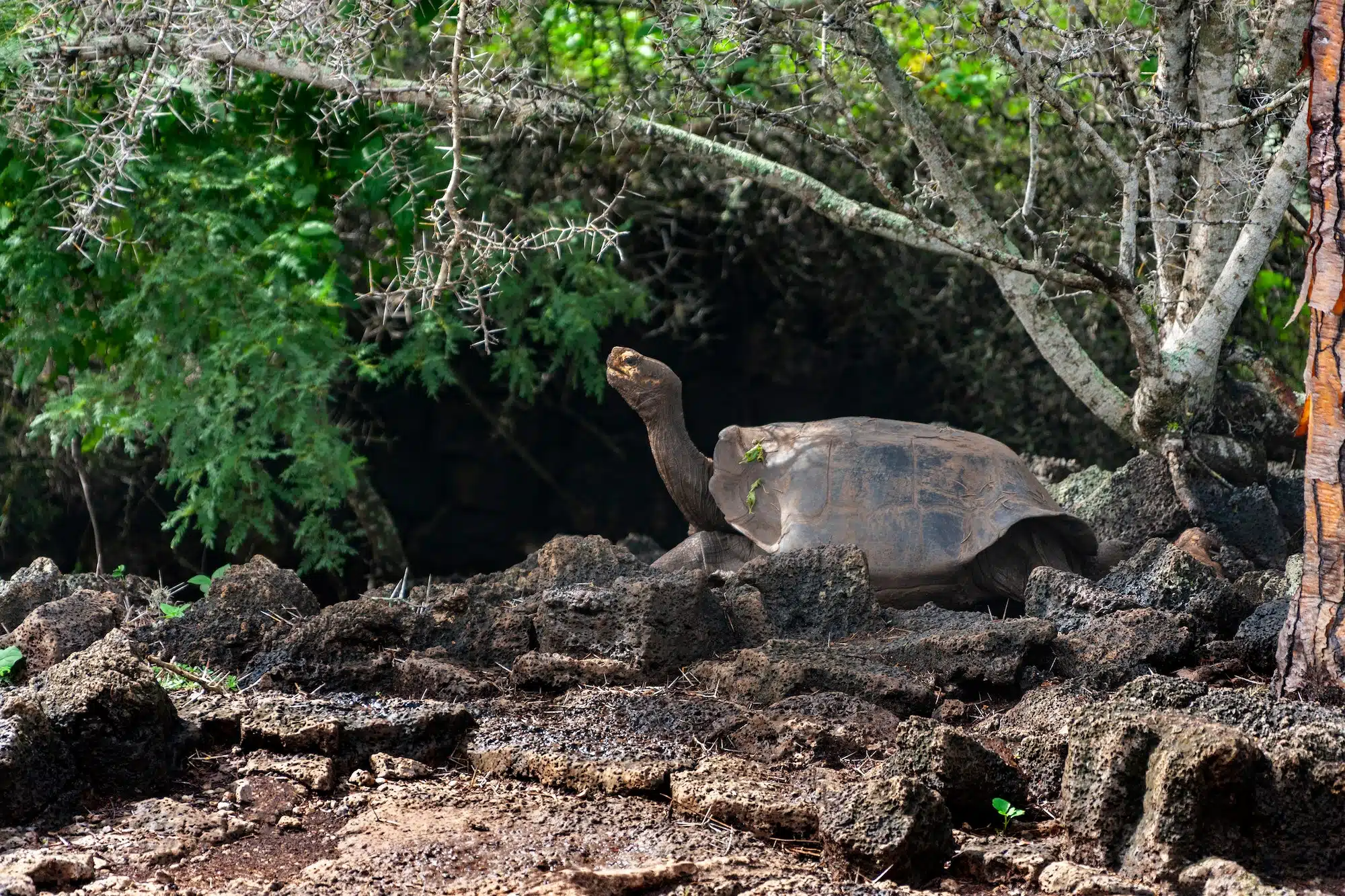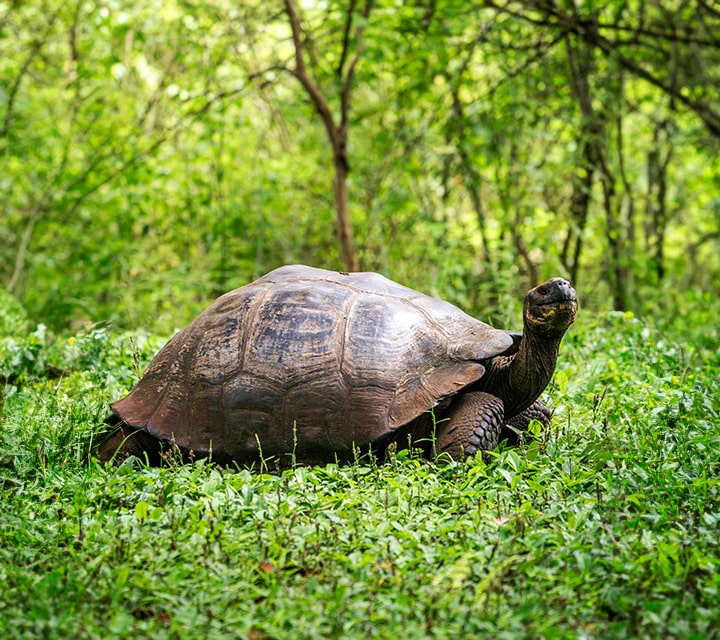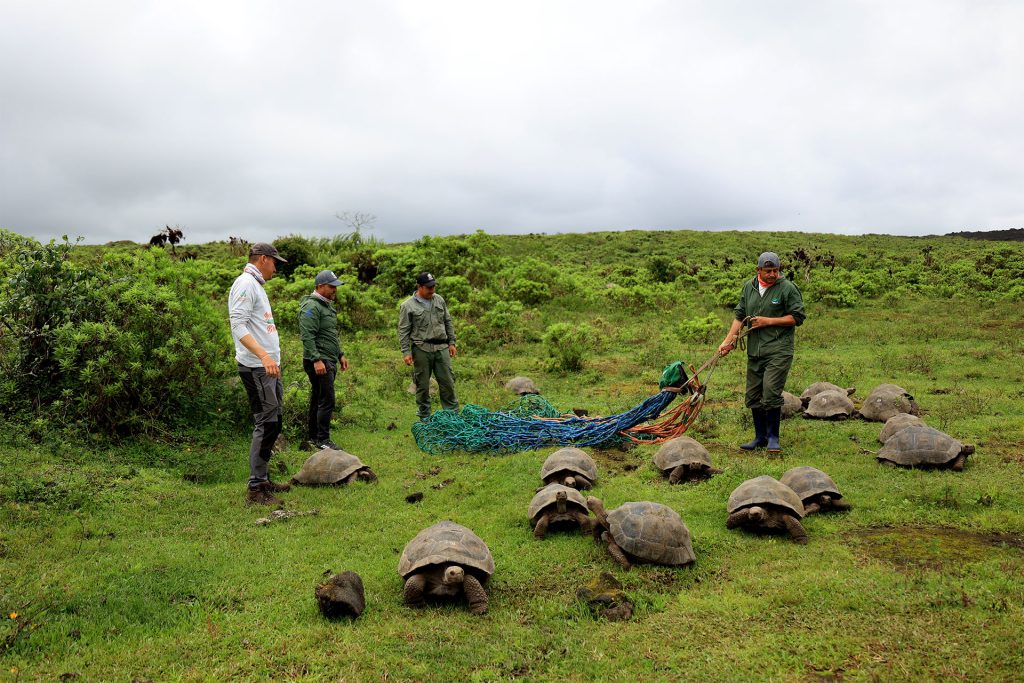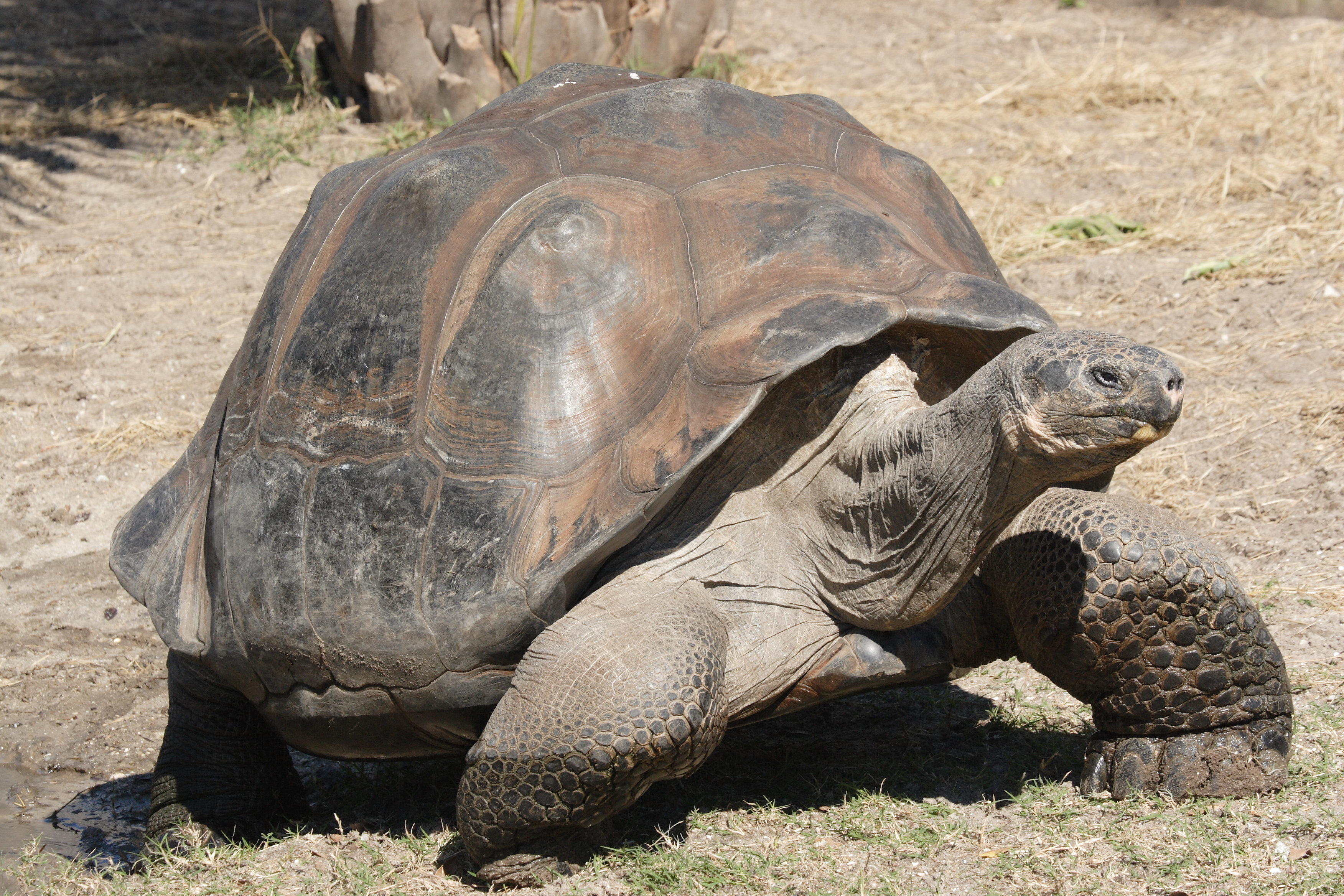Navigating the Wonders of the Galapagos Giant Tortoise Habitat

Introduction to the Galapagos Giant Tortoise Habitat
Overview of the Galapagos Islands
Nestled in the Pacific Ocean, approximately 1,000 kilometres off the coast of Ecuador, the Galapagos Islands comprise a volcanic archipelago that has captivated the imagination of scientists and nature enthusiasts alike. The uniqueness of these islands has made them a UNESCO World Heritage site and a living museum of evolution.
The Galapagos Islands are made up of 13 main islands, 6 smaller islands, and numerous islets and rocks. Each island has its own distinct environment, from arid landscapes to lush highlands, offering a variety of habitats that support a rich diversity of wildlife. This incredible biodiversity includes endemic species — animals and plants found nowhere else on Earth — thanks to the islands' geographical isolation. Key features of the Galapagos Islands include:
- Diverse Ecosystems: From marine environments rich with sea life to land-based habitats, these ecosystems provide essential niches for various species.
- Unique Wildlife: Home to famous inhabitants like the blue-footed booby, marine iguana, and, of course, the Galapagos giant tortoise, the islands are a sanctuary for many organisms that have adapted uniquely to their surroundings.
- Volcanic Origins: The islands were formed by volcanic activity, which continues to this day, presenting both challenges and opportunities for wildlife to evolve.
Importance of the Giant Tortoise in the Ecosystem
The Galapagos giant tortoise, one of the largest tortoise species worldwide, is not just an iconic figure of the archipelago but also plays a vital role in its ecosystem. These magnificent creatures are often referred to as "keystone species," meaning their presence significantly influences the environment and other species around them. Some important aspects of the giant tortoise's ecological role include:
- Seed Dispersal: As herbivores, giant tortoises consume large quantities of vegetation, including fruits and seeds. When they move around their habitat, they inadvertently disperse these seeds, aiding in plant diversity and ecosystem health.
- Landscape Modification: Their grazing habits help shape the plant communities in the islands, allowing for a balanced ecosystem. By consuming certain plant species, they create space for other flora to thrive.
- Nutrient Cycling: The waste produced by giant tortoises is rich in nutrients, contributing to soil fertility and promoting growth in their habitats.
Aside from their ecological contributions, the giant tortoise is a symbol of conservation efforts in the Galapagos. Their near extinction in the 19th century due to human activity serves as a cautionary tale, emphasizing the need for sustainable practices to protect this remarkable habitat and its inhabitants.
The Galapagos Islands and the giant tortoise share a fascinating relationship that continues to inspire conservation efforts worldwide. Understanding this connection is crucial for fostering appreciation and support in preserving one of Earth's natural wonders.

Evolution and Adaptations of the Galapagos Giant Tortoise
History of the Giant Tortoise Species
The history of the Galapagos giant tortoise is as riveting as the wildlife it shares its home with. These ancient reptiles, belonging to the family Testudinidae, have a storied past dating back millions of years. Appearing on the islands after drifting across the ocean, they likely arrived about 2-3 million years ago. This migration is a remarkable feat, indicative of the tortoise's resilience and adaptability. Once established in the Galapagos, the giant tortoises began to diverge into subspecies that adapted to the islands’ varying environments, resulting in 15 distinct types.
For example, on drier islands like Española, tortoises developed differentiated shell shapes, which influenced their feeding habits specific to the local flora. The climate and vegetation of each island played a crucial role in shaping these adaptations, a quintessential illustration of Darwin's theory of natural selection. Throughout history, the giant tortoise has navigated numerous challenges:
- Human Activity: European sailors have preyed on tortoises for food and trade, leading to drastic population declines. For example, by the 19th century, tortoise populations were decimated due to hunting.
- Invasive Species: Animals introduced by humans, such as goats, have competed with tortoises for food and contributed to habitat degradation.
Despite these threats, conservation efforts have revived the species, fostering a deeper understanding of their history and ecological importance.
Unique Adaptations for Survival
The Galapagos giant tortoise is not just a monument of historical significance; it is a masterclass in adaptation. Over generations, these tortoises have developed unique features that have equipped them to survive in their specific habitats. Here are a few fascinating adaptations that highlight their incredible resilience:
- Shell Variability: One of the most striking features of the giant tortoise is its shell. Tortoises from different islands exhibit shell shapes based on local food sources.
- Dome-shaped Shells: Found on islands with lush vegetation, these shells allow tortoises to reach more vegetation.
- Saddle-back Shells: Predominantly in arid regions, their shells are uniquely shaped to help tortoises stretch their necks higher to feed on sparse, tall vegetation.
- Size and Longevity: Giant tortoises can weigh over 400 kg and live for more than 100 years, which provides them with a significant advantage in environments where food sources might be only available seasonally. Their large size also deters many predators.
- Slow Metabolism: Adapted to survive on minimal food intake, giant tortoises have a slow metabolism which helps them sustain themselves during periods of drought or food scarcity.
These adaptations not only enable survival but also showcase the wonders of evolution. By exploring the history and survival strategies of the Galapagos giant tortoise, you’re gaining insight into how resilience and adaptation are interwoven in nature. It's a reminder that even in the face of adversity, life can persevere and adapt beautifully.

Conservation Efforts for the Galapagos Giant Tortoise
Threats Facing the Giant Tortoise Population
The story of the Galapagos giant tortoise is a testament to resilience, but it is not without its challenges. Over the years, various threats have jeopardized the survival of this majestic species. Understanding these threats is crucial as it lays the groundwork for effective conservation efforts. One of the primary threats facing the giant tortoise population are:
- Habitat Loss: As human populations grow, the expansion of agriculture and urban areas leads to the reduction of natural habitats for tortoises. This not only limits their living space but also affects their food sources.
- Invasive Species: Introduced animals like goats and rats pose significant challenges. Goats overgraze vegetation that tortoises rely on, while rats consume tortoise eggs, drastically reducing hatchling survival rates.
- Poaching and Illegal Trade: Despite its protected status, poaching continues to be a concern. Tortoises are hunted for their meat and shells, and although this is less common today, it still poses a threat.
- Climate Change: Changing weather patterns affect the islands' ecosystems, leading to severe droughts or heavy rains, which directly impact vegetation patterns and food availability for tortoises.
Each of these threats combines to create an intricate challenge for conservationists striving to protect this iconic species. Yet, there is hope on the horizon as conservation strategies are implemented to turn the tide.
Conservation Strategies and Success Stories
To combat these challenges, a variety of conservation strategies have been deployed, showcasing impressive successes over the years. Here are some noteworthy initiatives that have made a positive impact:
- Captive Breeding Programs: Leading the way in conservation efforts, captive breeding programs have played a critical role in increasing tortoise populations. For example, the Charles Darwin Research Station has successfully bred and released thousands of hatchlings back into the wild.
- Habitat Restoration: Efforts to restore natural habitats have been crucial. By removing invasive species like goats and rehabilitating overgrazed areas, conservationists have facilitated a thriving environment for tortoises and other native species.
- Education and Community Involvement: Engaging local communities is paramount. Educational campaigns have raised awareness about the tortoises' ecological importance and have encouraged sustainable practices among residents and visitors alike.
- Monitoring and Research: Ongoing research and monitoring provide vital data to understand tortoise populations and their habitats better. This information informs future conservation strategies, ensuring approaches remain effective and adaptive to new challenges.
A brilliant example of success can be found in the Española Island program, where a concerted effort to eliminate introduced species and protect hatchlings has led to a resurgence in the giant tortoise population. In just a few decades, numbers have risen significantly, proving that with determination and collaboration, positive change is possible.
While the Galapagos giant tortoise faces considerable threats, the tireless efforts of conservationists and the dedication of local communities offer hope. There is a shared responsibility to ensure that these iconic creatures continue to thrive in their unique oceanic home for generations to come. With ongoing efforts and a solid dedication to ecological balance, the future looks bright for the giant tortoise of the Galapagos.

Exploring the Natural Habitat of the Galapagos Giant Tortoise
Topography and Climate of the Galapagos Islands
As we delve deeper into the marvels of the Galapagos giant tortoise, it's essential to understand the unique topography and climate of their natural habitat. The islands, shaped by volcanic activity, present a rich tapestry of landscapes that contribute to the diverse environments in which the tortoise thrives. The geography of the Galapagos Islands can be captivating:
- Volcanic Formations: The islands are predominantly volcanic, featuring dramatic cliffs, craters, and lava fields that tell a geological story of millions of years. The rugged mountainous terrain offers various ecosystems that support different plant and animal life.
- Coastal Areas: The islands boast pristine beaches, rocky shorelines, and mangroves, which not only create stunning visuals but also serve as crucial habitats for other species, including marine iguanas and sea turtles.
- Highlands: The interior of some islands features lush highlands, characterized by dense vegetation and moist microclimates. This region is particularly significant for giant tortoises, as it provides abundant food sources year-round.
In terms of climate, the variations between the islands are noteworthy:
- Dry Season: The islands experience a dry season from June to December, marked by cooler temperatures and prolonged droughts. During this time, tortoises rely on their ability to conserve water and nutrients.
- Wet Season: From January to May, the wet season brings warmer temperatures and rainfall, leading to a burst of growth in vegetation. This seasonal shift is critical for the tortoise's diet, providing fresh greens and fruit.
The combination of diverse topography and a dynamic climate helps create a habitat where the giant tortoise can flourish.
Biodiversity in the Giant Tortoise Habitat
Beyond just the giant tortoise, the Galapagos Islands are a hotspot for biodiversity. The interaction of varied habitats supports an array of endemic species, making this region one of the world’s most biologically fascinating areas. In the giant tortoise's habitat, you will find a stunning collection of wildlife:
- Unique Flora: The vegetation ranges from dry cacti to lush grasses, with species like the Galapagos avocado and manzanillo providing essential nutrition for the tortoises. The unique adaptations of these plants enable them to thrive in the changing climate.
- Avian Population: The islands host a rich variety of birdlife, including famous inhabitants like the finches that played a critical role in Charles Darwin's studies on evolution. Many bird species, such as the flightless cormorant and Galapagos penguin, are endemic to the islands.
- Marine Life: The waters surrounding the islands are brimming with life, featuring vibrant coral reefs, sea turtles, and diverse fish species. This marine biodiversity plays a role in the overall health of coastal ecosystems, influencing the terrestrial habitats of the region.
As a visitor, standing among giant tortoises in their natural habitat can be a humbling experience. In the highlands, you'll witness these gentle giants munching on grass and leaves, embodying the essence of the Galapagos. This moment underscores the interconnection between all species and the need to celebrate and protect such biodiversity.
The Galapagos Islands offer a remarkable fusion of topography and climate, creating a vibrant habitat teeming with biodiversity. The delicate balance of these ecosystems not only supports the survival of the giant tortoise but also reflects the beauty and complexity of nature itself. Exploring this natural habitat opens your eyes to the wonders of evolution and the essential role each species plays in sustaining life on this remarkable archipelago.

Interactions with the Galapagos Giant Tortoise
Guidelines for Sustainable Tourism in the Galapagos
As we explore the interactions between humans and the Galapagos giant tortoise, it’s essential to highlight the importance of sustainable tourism. The islands welcome visitors from all over, eager to experience the stunning wildlife and pristine environments.
However, the delicate ecosystems need our protection to ensure they remain untouched for future generations. To promote sustainable tourism, here are some key guidelines that everyone should follow:
- Keep a Safe Distance: To avoid stressing the tortoises, maintain a respectful distance of at least 2 meters. These gentle giants can be sensitive to disturbances, so observing from afar is both respectful and safer for both parties.
- Stick to Designated Paths: Always stay on marked trails to minimize your impact on the surrounding environment. Straying off the path can lead to trampling of plants and disturbing nesting sites.
- Do Not Feed the Wildlife: Feeding tortoises or other wildlife alters their natural behaviours and can be detrimental to their health. It’s best to admire their natural habits without interference.
- Avoid Touching or Picking Up: Resist the urge to touch or pick up tortoises. While they may appear friendly, direct contact can stress them and disrupt their natural behaviours.
- Support Local Conservation: Choose eco-friendly tours and accommodations that contribute to conservation efforts. Supporting local businesses that prioritise sustainability helps ensure that your visit benefits the islands’ ecosystems.
- Educate Yourself and Others: Learn about the ecosystems and wildlife conservation efforts before your visit. Sharing your knowledge enhances the experience and raises awareness among fellow travellers.
These guidelines not only enhance your experience but also protect the incredible biodiversity of the Galapagos Islands, allowing you to engage meaningfully with the environment.
Research and Educational Opportunities in the Habitat
The Galapagos Islands are not just a paradise for tourists; they are also a critical site for scientific research and educational opportunities that contribute to our understanding of ecology and conservation. Visiting the islands provides you with opportunities to engage in enriching experiences:
- Field Studies: Many organizations, such as the Charles Darwin Foundation, offer programs for students and researchers to study the unique ecosystems of the islands. Participating in field studies can immerse you in hands-on experiences, allowing you to contribute to ongoing research projects.
- Guided Tours: Educational tours led by knowledgeable guides often include insights into the island’s ecosystems, the challenges they face, and the steps being taken to protect them. These experiences not only enhance your understanding but also foster appreciation for the islands’ natural wonders.
- Volunteer Programs: Engaging in volunteer opportunities can allow you to participate directly in conservation efforts. Whether it’s helping with habitat restoration or conducting wildlife surveys, you can make a meaningful impact while gaining firsthand experience.
- Workshops and Lectures: Participating in workshops or attending lectures at local research stations offers valuable information about the islands’ biodiversity, conservation practices, and the lives of the giant tortoises. Such educational experiences enrich your appreciation of the unique environment and inspire further action in conservation.
In conclusion, interactions with the Galapagos giant tortoise present exciting opportunities to appreciate and protect these magnificent creatures. By adhering to sustainable tourism practices and embracing research and educational initiatives, you can help ensure the preservation of this extraordinary habitat.
Your efforts contribute to the ongoing journey of the Galapagos Islands, allowing future generations to enjoy the wonders of the giant tortoise and their incredible ecosystem.
